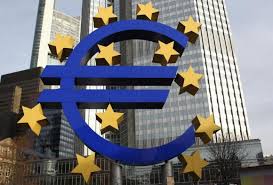The Eurozone is an economic and monetary union which consists of 19 countries within the European Union, which in itself is a confederation of 28 nations primarily from Europe, forming an economic union. The countries of the Eurozone use a common currency called the Euro and share a common independent monetary policy which is presided over by the European Central Bank.
The customs union is the foundation of the Eurozone, and is an essential element of the functioning of the single market. Common rules related to customs have been imposed at the borders of all the Eurozone countries, thus 19 Customs Administrations act as though they were one. These common rules go beyond the Customs Union as such – with its common tariff – and include all aspects of trade policy, such as preferential trade, health and environmental controls, the common agricultural and fisheries policies, non- tariff measures, etc.
The Euro zone Customs Union means:
- No customs duties at internal borders between the Eurozone Member States;
- Common customs duties on imports from outside the Eurozone;
- Common rules of origin for products from outside the Eurozone;
- A common definition of customs value
Here are a few facts on the European Union’s custom Union, of which the Eurozone is a part:
1. The EU is the largest trading space in the world – population of nearly 500 million
2.183 million Customs declarations completed in 2007 – 5.5 every seconds.
3. 1,545 million tonnes of sea cargo and 11.7 million tonnes of air cargo checked each year
With the elimination of exchange rate related risks and disappearance of the associated costs, trade flows have increased within the Euro zone and also with countries outside it. From 1999 until 2010, the Euro Area’s average current account as percent of GDP was -0.23 %
The exports of the Euro area have increased steadily after the introduction of the euro. The level of openness (export as a % of GDP in current prices) of the most important countries of the Euro zone at the moment of joining the monetary union in comparison to the year 2007.
Click here for government certification in Accounting, Banking & Finance




4 Comments. Leave new
Very informative!
Informative article..! good..!
Informative article.. Nice work..
Informative article 😀
Sorry to say the article was bit boring , may bi this is something that i didint know and i do want your to introduce some content that grooms up readers 😀
Rest all is fine 😀
Good work 😀
very well wriiten 😀